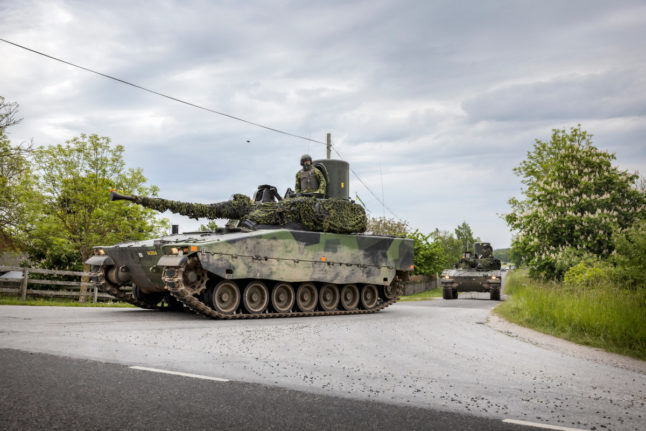Accession to the US-led alliance means stark changes for both Sweden’s defence and the geopolitical balance in the region.
Why did Sweden decide to join Nato?
At the end of the Napoleonic wars of the early 19th century, Sweden adopted an official policy of neutrality. Following the end of the Cold War, the neutrality policy was amended to one of military non-alignment.
While Sweden has sent forces to international peacekeeping missions, it has not gone to war for more than 200 years. The last conflict it fought was the Swedish-Norwegian War of 1814.
Despite its neutrality it pursued an active foreign policy, championing human rights and being a top aid donor per capita, sometimes being a labelled a “humanitarian superpower”.
But while remaining outside Nato, Sweden has formed ever-closer ties to the alliance, joining the Partnership for Peace programme in 1994 and then the Euro-Atlantic Partnership Council in 1997.
However, a majority of Swedes were long opposed to full membership and it was considered a taboo among the Social Democrats – Sweden’s largest political party.
Former Social Democrat defence minister Peter Hultqvist even declared in the fall of 2021 that he could “guarantee” that he would never participate in a process to join Nato.
Only months later, Russia’s 2022 invasion of Ukraine led to a dramatic shift in both public opinion and among political parties.
A broad majority of the Swedish parliament voted to apply for membership, which the country did – along with Finland – in May 2022.
What does Sweden bring to Nato?
For a long time, Swedish policy dictated that the country needed a strong military to protect its neutrality.
But after the end of the Cold War, it drastically slashed its defence spending, turning its military focus toward peacekeeping operations around the world.
In 1990, defence spending accounted for 2.6 percent of gross domestic product, shrinking to 1.2 percent by 2020, according to the government.
Spending started to increase again following Russia’s 2014 annexation of Crimea.
In March 2022, after Russia’s full invasion of Ukraine, Sweden announced it would increase spending again, targeting two percent of GDP “as soon as possible”.
In late 2023, Sweden’s government said military spending would exceed the two percent goal in 2024.
Combining its different branches, the Swedish military can field some 50,000 soldiers, about half of whom are reservists.
Its air force includes more than 90 of its domestically developed fighter jet Jas 19 Gripen, and it has a Baltic Sea navy that includes several corvettes and submarines.
Swedish Prime Minister Ulf Kristersson also said in January that his country was ready to contribute troops to Nato’s forces in Latvia.
Sweden and Finland joining Nato also means that the Baltic Sea becomes surrounded by alliance members, with some analysts dubbing it a Nato lake.
“It’s the final piece of the puzzle on Nato’s map in Northern Europe that is now falling into place,” Robert Dalsjö, an analyst at the Swedish Defence Research Agency (FOI), told AFP.
What are the implications for Sweden’s defence?
As a member of Nato, the country’s military calculations change in several key aspects.
“Sweden has for a long time worked from the presumption: ‘We’ll solve the task alone’,” Jan Henningson, a researcher at the FOI, told AFP.
“That changes now,” he added, explaining that defence will now need to be conducted within the alliance.
“Now we’ll have to learn to be a team player. And we’ll have to adjust to the fact that we are not preparing to defend just Swedish territory, but allied territory,” Dalsjö noted.
For Sweden, joining the alliance also upends its traditional thinking of power relations in a potential conflict.
“Traditionally, we have thought that we are a small state and whoever attacks us is much bigger,” Henningson said.
But when it comes to the economy and demographics, “Nato is much larger than Russia,” according to Henningson.
“We are no longer David in all aspects, so to speak,” Henningson said – a change that is not lost on Sweden’s military.
“It’ll be a quite impressive force with hopefully the combined might of 32 countries from Turkey in the south all the way up to Svalbard” in the Arctic, Swedish army chief Jonny Lindfors told newspaper Dagens Nyheter in December.
He added that he thinks the extra strength would make the risk of a conflict breaking out less likely.
Article first published in February 2024



 Please whitelist us to continue reading.
Please whitelist us to continue reading.
It is sad to see military preparation. It is said that violence starts when politics fails, I would like to see more talks, more discussions, more empathy, more agreements between country leaders.